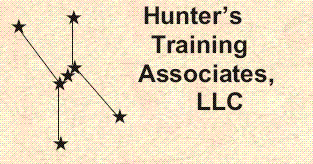
Developing Applications for z/OS UNIX - Topical Outline
Day One
Introduction to the class
Applications for z/OS UNIX
Setting the stage: A Level Set
Setting the stage: Skills to Acquire
The Ubiquitousness of C
Computer exercise: Class Lab Set Up
File Access in z/OS UNIX Applications
What We Already Know
C functions for accessing QSAM and HFS files
COBOL - QSAM access
COBOL - native access to HFS files
PL/I - accessing QSAM and HFS files
Assembler - accessing QSAM and HFS files
Computer exercise: Accessing HFS files under OMVS
Interacting with the user at the OMVS terminal
COBOL - Using DISPLAY and ACCEPT
PL/I - Using PUT LIST and GET EDIT
C printf() and scanf() functions - an introduction
The CALL interface
Function references
Interpreting C language descriptions
Computer exercise: Using printf() and scanf() - C programmers only
Calling C functions from COBOL
General notes
fopen(), fread(), fwrite(), fclose(), printf(), scanf()
Computer exercise: Using printf() and scanf() - COBOL programmers only
Calling C functions from PL/I
General notes
fopen(), fread(), fwrite(), fclose(), printf(), scanf()
Computer exercise: Using printf() and scanf() - PL/I programmers only
Calling C functions from Assembler
General notes
fopen(), fread(), fwrite(), fclose(), printf(), scanf()
Computer exercise: Using printf() and scanf() - Assembler programmers only
Day Two
Compiling / Assembling, and binding Under OMVS
Compiling and binding under OMVS
Archive libraries
Shell commands: ar
C370LIBs
Shell commands: c89
Computer Exercise: Using c89 to compile and bind
Computer Exercise: Using c89 to Assemble and bind
Assembling - a new alternative
The as command
Computer Exercise (Optional): Using as to Assemble a program
Compiling COBOL and binding executables
Shell commands: cob2
Computer Exercise: Using cob2 to Compile and bind
Compiling PL/I and binding executables
Shell commands: pli
Computer Exercise: Using pli to Compile and bind
Binding: the ld command
Shell commands: ld
Computer Exercise (Optional, for Assembler programmers): Bind a module
Introduction to Callable UNIX services
Dynamic calls
Callable UNIX services
The BPX1LOD service
Assembler calling BPX1LOD
COBOL calling BPX1LOD
PL/I calling BPX1LOD
C calling BPX1LOD
A selection of callable services
BPX1... services, concluded
Computer Exercise: Dynamic calls
Day Three
Parms and Environment Variables
How the PARM field is set up
Accessing the PARM field - Assembler
Accessing the PARM field - COBOL
Accessing the PARM field - PL/I
Accessing the PARM field - C
Accessing the PARM field using CEE3PRM and CEE3PR2
Parms for subroutines
The PARM set up under the shell
Accessing the parm from a program run under the shell
Determining the environment (CEE3INF)
Using Environment Variables Under the Shell
C functions clearenv(), getenv(), putenv(), setenv()
Using the CEEENV callable LE service
Computer Exercise: Working With Environment Variables
Managing Applications: Scripts and make
Application management
Using shell scripts for application management
make - the big picture
Introduction to makefiles
Makefiles by example
Computer Exercise: Basic Makefiles
Archive files and make syntax
Archive files and make
Target attributes
Designing makefiles
Recursive make
Include files for make
Special target directives
The syntax for make
Computer Exercise: Combining makefiles
More on make
Target lines: rule operators
Runtime macros
Command line prefixes
Group recipes
Special target directives, revisited
Macro modifiers
Conditionals
Conclusion
Appendices
Source programs
HFS File I/O and C Functions
Kernel functions for working with HFS files
HFS File I/O and integrity
Make and inference rules
Index
U520 / 3 Days
These Materials © Copyright 2012 by Steven H. Comstock
Materials version: V5.x
Course description
Course Objectives
z/OS UNIX curriculum
Home page
This page last updated: 1 August, 2014
Copyright © 2014 by Hunter's Training Associates, LLC